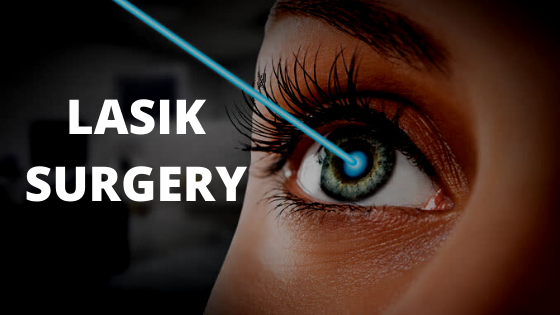LASIK eye surgery might mean no more corrective lenses. But it is not right for everybody. Learn whether you are a good candidate and what to consider as you weigh your decision. If you are tired of wearing glasses or contact lenses, you might wonder if LASIK surgery is right for you.
LASIK is a type of refractive eye surgery performed to treat Myopia, Hyperopia, Astigmatism. Generally, most individuals who’ve laser-assisted in situ keratomileusis eye surgery achieve 20/25 vision or better, which works well for most activities. But many people still eventually need glasses for driving during the night or reading as they get older.
LASIK surgery has a good track record. Complications that result in a loss of vision are rare, and many individuals are satisfied with the results. Certain adverse effects, especially dry eyes and temporary visual disturbances, are fairly common. But these usually clear up following a couple of weeks or months, and very few people consider them to be a long-term problem. Your results depend on your refractive error along with other factors.
Individuals with mild near-sightedness have a tendency to have the most success with refractive surgery. Individuals with a high level of myopia or far-sightedness along with astigmatism have less predictable results.
WHAT DOES LASIK EYE SURGERY INVOLVE?
There are various variations of laser refractive surgery. LASIK is the best known and most commonly performed. Many articles, including this one, will use the term LASIK to refer to all kinds of laser eye treatment. Typically, images are focused on the retina in the rear of your eye. With myopia(nearsightedness), hyperopia(farsightedness) or astigmatism, they turn out to be focused elsewhere, leading to blurred vision.
Myopia is a condition wherein you see nearby objects clearly, but distant objects are blurry. Whenever your eyeball is slightly longer than normal or when the cornea bends too sharply, light rays focus in front of the retina and blur distant vision. You can see objects which are close more clearly, but not those which are far away.
Hyperopia is a condition wherein you can see far objects clearly, but nearby objects are blurry. When you have a shorter than average eyeball or a cornea that’s too flat, light focuses behind the retina instead of on it. This blurs near vision and sometimes distant vision. Astigmatism causes overall blurred eyesight. When the cornea curves or flattens unevenly, the outcome is astigmatism, which disrupts the focus of near and distant vision.
Typically, blurred eyesight is corrected by bending light rays with glasses or contact lenses. But reshaping the cornea itself will also provide the necessary refraction and vision correction. Before a LASIK procedure, your eye surgeon will evaluate detailed measurements of your eye.







